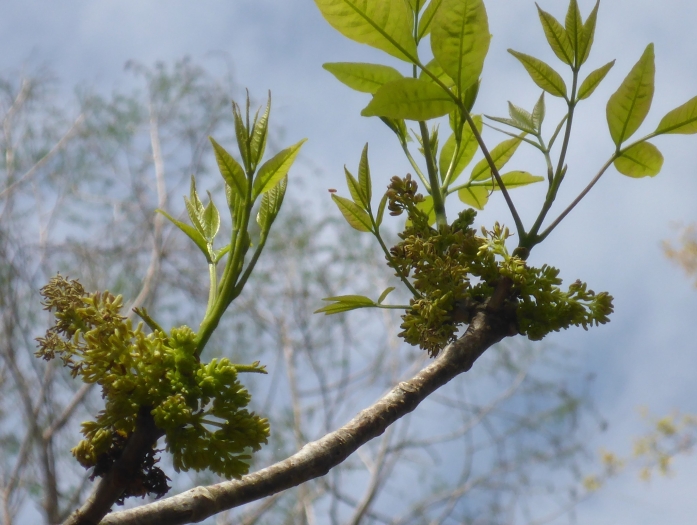Pumpkin Ash
(Fraxinus profunda)
Pumpkin Ash (Fraxinus profunda)
/
/

mfeaver
CC BY 4.0
Image By:
mfeaver
Recorded By:
Copyright:
CC BY 4.0
Copyright Notice:
Photo by: mfeaver | License Type: CC BY 4.0 | License URL: http://creativecommons.org/licenses/by/4.0/ | Rights Holder: mfeaver | Publisher: iNaturalist | Date Created: 2019-03-14T12:28:09-07:00 |


































Estimated Native Range
Summary
Fraxinus profunda, commonly known as Pumpkin Ash, is a deciduous tree that is part of the Oleaceae family. It is native to swampy forests and wetlands in the Southeastern USA, often found growing along streams and rivers. This species can reach an impressive height of 120 feet and a width of 30-50 feet. The bark of mature trees is gray and thick, developing distinctive diamond-shaped fissures. Winter buds are velvety and dark brown to blackish in color. Pumpkin Ash produces inconspicuous purplish-green flowers in panicles during the spring, just before the new leaves emerge. Although the flowers lack petals and are not showy, they are an important source of pollen for wind pollination. The fruit is a samara, notable for being the largest among North American ash species.
Pumpkin Ash is valued for its ability to thrive in wet conditions, making it suitable for riparian plantings and restoration projects. It is also used for urban planting due to its tolerance of wet soils. In cultivation, it requires full sun and high amounts of water, preferring soils with medium to slow drainage. While it is not commonly used for ornamental purposes due to its inconspicuous flowers, it does provide significant ecological benefits, such as stabilizing wetland soils and offering habitat for wildlife. Gardeners should be aware that like other ash species, Pumpkin Ash is susceptible to the emerald ash borer, a pest that can cause significant damage and potentially kill the tree.CC BY-SA 4.0
Pumpkin Ash is valued for its ability to thrive in wet conditions, making it suitable for riparian plantings and restoration projects. It is also used for urban planting due to its tolerance of wet soils. In cultivation, it requires full sun and high amounts of water, preferring soils with medium to slow drainage. While it is not commonly used for ornamental purposes due to its inconspicuous flowers, it does provide significant ecological benefits, such as stabilizing wetland soils and offering habitat for wildlife. Gardeners should be aware that like other ash species, Pumpkin Ash is susceptible to the emerald ash borer, a pest that can cause significant damage and potentially kill the tree.CC BY-SA 4.0
Plant Description
- Plant Type: Tree
- Height: 60-80 feet
- Width: 30-50 feet
- Growth Rate: Rapid
- Flower Color: N/A
- Flowering Season: Spring
- Leaf Retention: Deciduous
Growth Requirements
- Sun: Full Sun
- Water: High
- Drainage: Medium, Slow
Common Uses
Bee Garden, Bird Garden, Butterfly Garden, Deer Resistant, Water Garden
Natural Habitat
Swampy forests and wetlands
Other Names
Common Names: Red Ash, Swell-Butt Ash, Frêne Pubescent
Scientific Names: , Fraxinus profunda, Fraxinus tomentosa, Fraxinus michauxii, Fraxinus profunda var. ashei, Fraxinus americana var. profunda, Fraxinus pennsylvanica var. profunda, Calycomelia profunda, Calycomelia tomentosa, Fraxinus pennsylvanica subsp. profunda,
GBIF Accepted Name: Fraxinus profunda (Bush) Bush